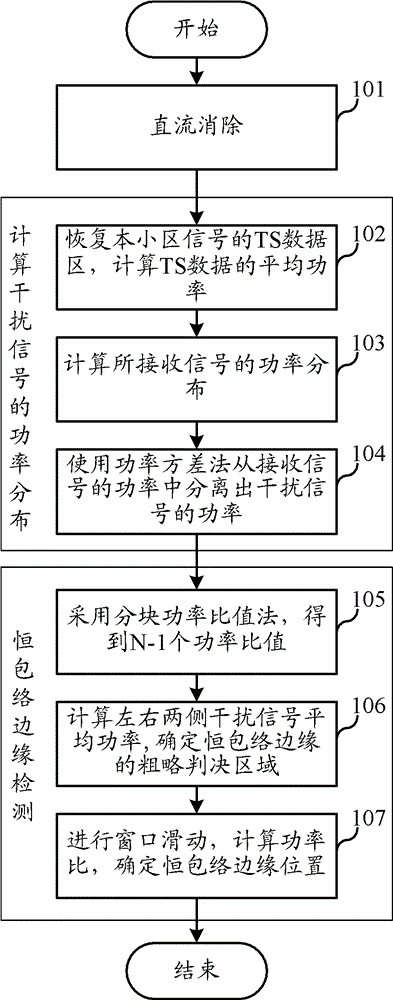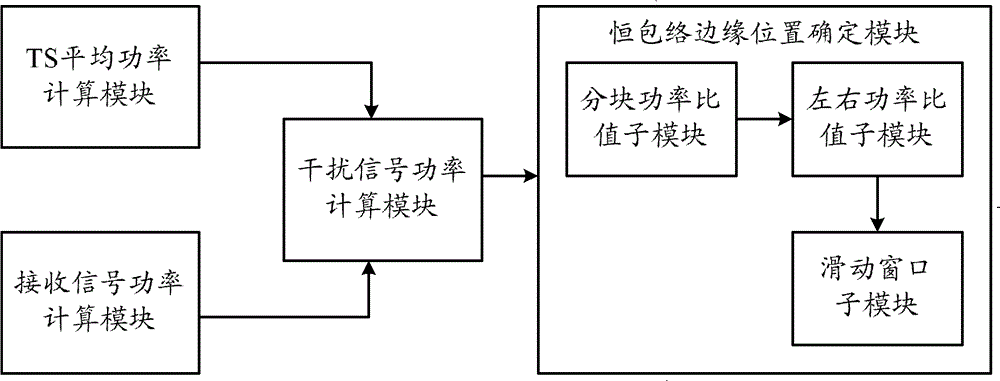Edge detection method and device for constant envelope same frequency interference
An edge detection device and a technology for co-channel interference, which are applied in the field of edge detection technology for co-channel interference, can solve problems such as affecting the performance of an equalization module, and achieve the effect of improving demodulation performance.
- Summary
- Abstract
- Description
- Claims
- Application Information
AI Technical Summary
Problems solved by technology
Method used
Image
Examples
Embodiment Construction
[0052] In order to make the purpose, technical solution and advantages of the present invention clearer, the following will further describe the implementation of the present invention in detail in conjunction with the accompanying drawings.
[0053] The first embodiment of the present invention relates to a constant-envelope co-frequency interference edge detection method. The position of the constant-envelope edge can be accurately found in the asynchronous co-frequency interference, which reflects the position of the received signal on both sides of the constant envelope edge under asynchronous co-frequency interference. The characteristics of the terminal signal and the characteristics of the interference signal, so that different strategies can be adopted according to the edge detection results, which is beneficial for the equalization module to demodulate data in different regions and improve the demodulation performance of the equalization module.
[0054] The specific p...
PUM
 Login to View More
Login to View More Abstract
Description
Claims
Application Information
 Login to View More
Login to View More - R&D
- Intellectual Property
- Life Sciences
- Materials
- Tech Scout
- Unparalleled Data Quality
- Higher Quality Content
- 60% Fewer Hallucinations
Browse by: Latest US Patents, China's latest patents, Technical Efficacy Thesaurus, Application Domain, Technology Topic, Popular Technical Reports.
© 2025 PatSnap. All rights reserved.Legal|Privacy policy|Modern Slavery Act Transparency Statement|Sitemap|About US| Contact US: help@patsnap.com



